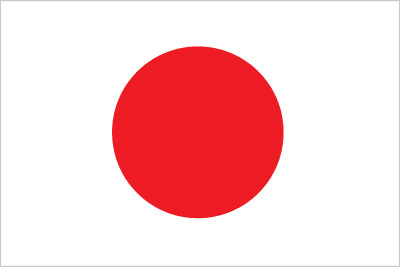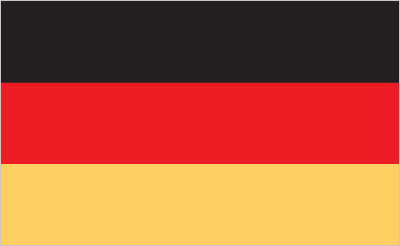
What kind of Japanese foods and ingredients can be bought in European supermarkets and shops?
If you live in Europe, you may often find yourself wanting to eat Japanese food.
Do you know what ingredients you can find at the supermarket?
So this time, I would like to explain about Japanese food ingredients that you can buy at supermarkets and shops in Europe.
Ingredients for Japanese food that you can buy at supermarkets and shops in Europe
We will introduce the basic ingredients used in Japanese food that are necessary when making various Japanese dishes.
Especially if you are planning to move to Europe, knowing foods that are easy to obtain will help you decide what to prioritize and bring from Japan when you move.
Basic sashisuseno "se", soy sauce: Obtaining difficulty ☆

Soy sauce is required to prepare most Japanese dishes.
In recent years, there has been an increase in the number of supermarkets in Europe that have small corners for Asian ingredients.
So it's becoming relatively easy to get your hands on soy sauce.
Kikkoman's bottle type soy sauce is placed in a nearby supermarket.
However, the options are limited, so if you want variety and a range of sizes, we recommend using Japanese food stores or online shops.
There is a high possibility that both light and dark soy sauce are available, and not only that, but also sashimi soy sauce.
You will find the type of soy sauce that you need.
Useful for binders and fried foods, Bread crumbs: Difficulty of obtaining: ☆ ☆

Bread crumbs are necessary when making hamburgers, pork cutlets, etc.
You can substitute it by shaving hard or dry bread, but it takes time and often does not shave cleanly.
Therefore, you may want bread crumbs that are sold in bags.
Depending on the store, it is possible to buy bread crumbs at the supermarket, but to put it the other way around, it is not everywhere.
If you can't find it at a nearby store, there is a high probability that you can find bread crumbs at a Japanese food store or an Asian store.
Larger supermarkets often carry it.
By the way, flour, which is also necessary for frying, is sold at supermarkets in Europe.
They are often bundled together in powder form and are easy to find.
However, it depends on the store whether they have all kinds of flour, medium flour, and strong flour, so you need to be careful.
When making sushi at home, wasabi: Obtaining difficulty ☆☆

Wasabi is rarely used, but it's something you'll crave when making sushi at home.
When I live in Europe, I sometimes have local friends and colleagues who want to try sushi, so I have a sushi party at home.
In fact, the popularity of wasabi is increasing, with people from overseas saying they want to try wasabi.
Some European supermarkets have recently started selling wasabi.
Whether wasabi is used as a spice in creative dishes and rankings, or because Japanese food is becoming more popular, it is sometimes put together with the above-mentioned soy sauce in the Asian food section.
Dashi and Miso Necessary for Various Japanese Foods: Obtaining Difficulty ☆☆

In Europe, it is very difficult to obtain dashi from katsuobushi (bonito flakes) and kombu (kelp).
Also, it is basically impossible to buy dashi soup at supermarkets in Europe, so these are not sold at all.
Dashi-related ingredients must be purchased at Japanese food stores, Asian shops, or online.
In these places, you can find a wide variety of dashi soup stocks.
However, there are cases where granule-type or packed dashi is available at large supermarkets.
With this, you don't have to use ingredients that are hard to get in Europe to make the dashi stock, and you can complete the dish in a short amount of time.
Besides miso soup, of course it is necessary as a base for Japanese food, and it can also be used as a base for mixed rice.
Of course, miso is required to make miso soup.
This miso is also hard to find in European supermarkets, except for large supermarkets.
In addition, there is an increasing number of BIO-affiliated shops that sell health-conscious foods in Europe that sell miso as a healthy food.
As for the size, they are rarely sold in packs of the size commonly seen in Japan, so they are sold in smaller packs and bags.
If you don't need a large amount, or if you're looking for a small size for traveling or at a friend's house, you can find it at BIO stores.
Lastly, I would like to introduce some foods that you can buy anywhere in Japan, but are surprisingly difficult to buy in Europe.
Furikake to accompany white rice: Difficulty of obtaining: ☆☆☆

When you eat rice, you may feel lonely with only white rice.
In such a case, the rice will be dramatically delicious just by adding furikake.
Furikake is usually sprinkled over rice, but there are many other ways to use it, such as adding hot water to turn it into ochazuke.
In Europe, where rice is not a staple food, and in countries where japonica rice is not as sticky as it is dry, furikake is not a familiar dish.
Unfortunately, furikake is not readily available in European supermarkets, and can be purchased at Japanese food stores.
If you don't have a Japanese food store in your living area, or if you don't want to bother, you can also look for it from the online shop.
lastly
What did you think about the Japanese ingredients and foods that you can buy in European shops?
For those who have lived abroad, it is important to know that living in Japan and moving to Europe for the first time makes decisions about what can and cannot be bought. This is a confusing point.
Small condiments such as furikake don't take up space in the bag, so we recommend you bring a few of your favorite items.
On the other hand, liquids such as soy sauce are heavy and bulky, so it is convenient to procure locally.
Our Germany-based online shop also carries soy sauce, mirin, and various other Japanese foodstuffs, ranging from table-sized to commercial use.








